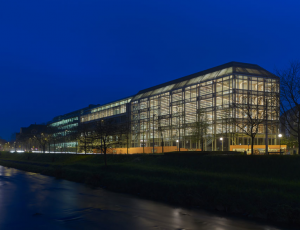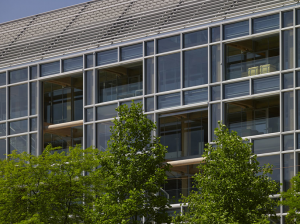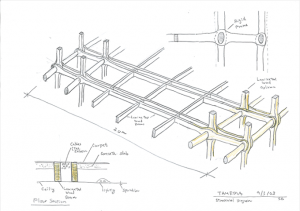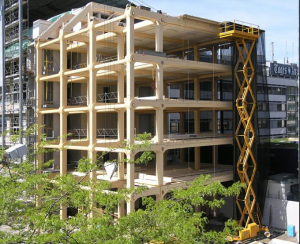No-nails structural wood – Shigeru Ban’s Tamedia office building
Shigeru Ban: Tamedia office building in Zurich completed – new seven-story office for Swiss media company sited along the Sihl Canal consists of an interlocking wooden structure within a glass skin. The architect was inspired by both the vernacular Swiss use of wood and techniques of Japanese joinery. The client, Tamedia, wanted a building that was as sustainable as possible.
in character with the architect’s tendency toward low-impact tectonic systems, shigeru ban’s first project in switzerland supercedes the country’s strict environmental responsibility measures with heating and cooling system that uses groundwater and therefore negates the use of fossil fuels entirely. additionally, the double facade buffers climactic conditions and provides unrivaled views of the river.
Metalocus has drawings, plans, sections, and an axonometric as well as more photos:
The defining feature of the building is a wooden supporting structure for which 2,000 cubic meters of spruce wood were used. This supporting structure performs its function without any additional steel reinforcements, and was assembled on site from prefabricated components that were precision-milled down to the last millimeter.
For more on the office aspect of the project and insight into the engineering of the wooden structure (and more photos), take a look at onofficemagazine:
“Tamedia asked us to create a relaxing office space for employees,” says architect Kazuhiro Asami, who led the project from Shigeru Ban’s Paris offices. “Then Shigeru had an inspiration to use the timber structure to create a space like a living room in a house.” …
Building in Switzerland gave the practice the opportunity to work with wood on a scale that would be impossible in Japan, due to tighter restrictions governing the use of the material. …
One of the design’s most innovative features is its system of joints made entirely of wood, negating the need for steel reinforcements. Two beams sandwich the massive columns, while another perpendicular beam with an oval section that prevents it from rotating penetrates the three elements and locks them together. “We worked with Blumer-Lehmann, one of the most efficient timber processing companies in Switzerland,” says Asami.








